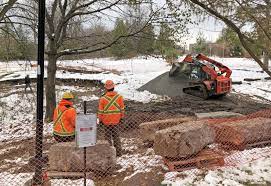Constructing a New Path
In discussion with author Anirudh Kanisetti, historian, curator, and broadcaster William Dalrymple revealed more than just the book cover at the recent launch event of his next book, which is scheduled to be released in bookstores in September

Dalrymple proposes the notion of a “Golden Road”—an Indian corridor of influence, or “an Indosphere”—that spanned from the Red Sea to the Pacific and carried ideas that had a global effect. This theory serves as a counterweight to the Silk Route. This time around, Dalrymple’s literary caravan will include the arts and artists, Indian religions, priests and monks, technology, astronomy, mathematics, and mythologies—all of which may be found in The Golden Road. How Ancient India Transformed the World (Bloomsbury), and they will be written in his signature historical writing style, which is filled with adventure, moves at the speed of a book, and brings fresh information and characters to life.
Dalrymple’s breakthrough film was The White Mughals (2002), but The City of Djinns (1993) cemented his reputation. In its first six months, his podcast, “Empire” (2022), featuring journalist Anita Anand, had over five million downloads. Numerous honors and medals have been bestowed upon all 10 of his works, including the Arthur Ross Medal of the US Council on Foreign Relations, the Wolfson Prize for History, the Duff Cooper Memorial Prize, the Hemingway Prize, and the Thomas Cook Travel Book Award. It’s not bad for “the last boy in class to go abroad,” as he put himself to the amused crowd on Wednesday at the British Council auditorium in Delhi.
Now residing largely in Delhi, Dalrymple is a beloved co-director of the Jaipur Litfest as well as an author who writes history with India at its center. India was “the fulcrum” of the globe even before the Silk Route, he claims. He also notes that Marco Polo, the Venetian explorer who traveled across Asia in the 13th century, never mentioned the Silk Route in his narratives; instead, China runs with it, maintaining its position at its center. “And we accept it; it’s not historical at all. India is absent from traditional conceptions and maps of the Silk Road, which is absurd, he remarks, drawing murmurs of appreciation from the crowd.
Additionally, he makes note of India’s historical economic influence, having served as Rome’s principal trade partner before emerging as a global powerhouse. Another viewpoint is provided by Kanisetti, the author of Lords of the Deccan: Southern India from the Chalukyas to the Cholas, who emphasizes the compromise that creates countries and civilizations. Although commerce with India may have helped finance Roman forces, he informs the audience that the trade “also fed into south India’s urbanisation.” Buddhist institutions were built with the assistance of retired Roman legionnaires or former legionnaires who were employed by southern rulers and remained in the region.
One of the night’s fascinating revelations was how Buddhism, one of ancient India’s earliest “exports,” expanded its impact into the fields of politics, the arts, and ideas. According to the Gandhara school of art, statues of Coptic saints, who belonged to the Egyptian branch of the Christian church, had Gandhara chins. Wu Zetian, a Chinese Empress, was also open to Buddhist concepts and encouraged the spread of Buddhism in China. Dalrymple acknowledges that this was done for political reasons, to overthrow the Confucian institution, but even so, Buddhism became the official religion of China for a short while. Hinduism’s spread across Southeast Asia may also be attributed to the sociopolitical concepts it introduced to other areas.
He continues, “The Indian takeover” rested more on the power of intellectual ideas than on military conquest for a millennium and a half, from 250 BC to 1200 AD. Java’s rulers adopted the Hindu paradigm of royalty from the Brahmins who had immigrated there; monarchs like as Purnavarman saw themselves as Vishnu on earth, erecting enormous Vishnu temples to establish their legitimacy as god-kings. Dalrymple also emphasizes how surprised he is by the several enormous temple construction projects taking place outside of India.
“The largest Hindu temple is located in the Cambodian temple complex of Angkor Wat, not in India,” he continues. Like all of Dalrymple’s books, this one should be intriguing due to its focal points. He states that the manuscript is undergoing final revisions at launch. Will it take on a different final form than the one he has been presenting? Will there be any chance of “rescuing history from the nation,” to use a well-known phrase? Read on September 12 to learn more.







